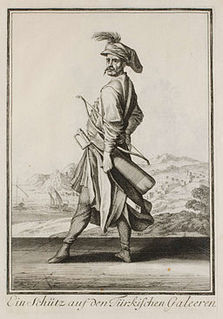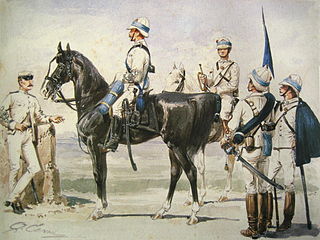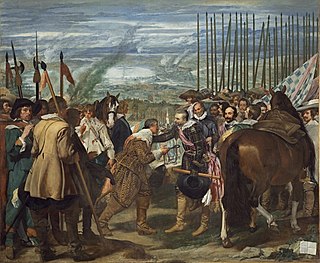 W
WAir force ground forces and special forces are ground forces, and may include special operations units that are part of a nation's air force. Airmen assigned to such units may be trained, armed and equipped for ground combat and special operations.
 W
WAzebs, azabs or azaps, also known as Asappes or Asappi, were irregular soldiers, originally made up of unmarried youths. They were consripted among reayas and served in various roles in the early Ottoman army. The word azeb either often indicates an light infantry soldier which was called yaya azeb or a marine soldier which was called bahriye (navy) and deniz (sea) azeb. The term was used in the sense of "pirate" or "buccaneer" in Byzantine, Latin and Italian sources from 14th to 16th century.
 W
WThe Cacciatori d'Africa were Italian light infantry and mounted infantry units raised for colonial service in Africa. Cacciatori units later served in Somalia, Eritrea, Tripolitania and Cyrenaica for the Italian colonial empire. Partially mechanised in the early 1920s, the Cacciatori d'Africa remained part of the Regio Corpo Truppe Coloniali until 1942.
 W
WThe Greek Legion, officially the Light Jäger Foot Legion, was a Jäger infantry unit in the service of the Russian-controlled Septinsular Republic. It consisted of soldiers of Greek and Albanian origin and was led by Major-General Emmanouil Papadopoulos. It was active between 1805 and 1807, taking part in the War of the Third Coalition and the Russo-Turkish War (1806–1812).
 W
WThe Immortals also known as the Persian Immortals was the name given by Herodotus to an elite heavily armed infantry unit of 10,000 soldiers in the army of the Achaemenid Empire. This force performed the dual roles of both imperial guard and standing army. The force consisted mainly of Persians, but also included Medes and Elamites. Essential questions regarding the unit remain unanswered, because authoritative sources are missing.
 W
WThe Jixiao Xinshu or New Treatise on Military Efficiency is a military manual written during the 1560s and 1580s by the Ming dynasty general Qi Jiguang. Its primary significance is in advocating for a combined arms approach to warfare using five types of infantry and two type of support. Qi Jiguang separated infantry into five separate categories: firearms, swordsmen, archers with fire arrows, ordinary archers, and spearmen. He split support crews into horse archers and artillery units. The Jixiao Xinshu is also one of the earliest existing East Asian texts to address the relevance of Chinese martial arts with respect to military training and warfare. Several contemporary martial arts styles of Qi's era are mentioned in the book, including the staff method of the Shaolin temple.
 W
WThe Jungle division was a military organisation adopted in early 1943 by the Australian Army during the Second World War. This organisation was a much lighter version of the standard British-pattern infantry division used during previous campaigns in the deserts of the Mediterranean and Middle East Theatre fighting the Germans and Italians in 1940 and 1941 and was optimised to meet the needs of jungle warfare against the Japanese in the South West Pacific Area. Jungle divisions were smaller and had fewer heavy weapons, vehicles and support units than the British-pattern division previously used and had an establishment of just 13,118 men, approximately 4,000 fewer than a standard division. The bulk of the reduction occurred among the administrative, transport and artillery units. The conditions that prevailed in the South West Pacific Area led the Australian Army to initially convert five infantry divisions to Jungle divisions, although this was later increased to six. Divisions converted to the jungle organisation included three Militia divisions: the 3rd, 5th and 11th and the three Australian Imperial Force (AIF) divisions: the 6th, 7th, 9th. Despite some modifications, this re-organisation proved successful during later Australian operations in New Guinea, New Britain, Bougainville, Aitape-Wewak and Borneo in 1944–1945.
 W
WThe Serbian Free Corps, known simply as frajkori, was a volunteer militia composed of ethnic Serbs, established by the Habsburg Monarchy, to fight the Ottoman Empire during the Austro-Turkish War (1787–91). The conflict with Turkish forces ultimately proved inconclusive. The rebellion in the Sanjak of Smederevo and militia's operations resulted in the period of Habsburg-occupied Serbia, which took place from 1788 to 1792. Ultimately, the Serbian volunteer corps had the legacy of promoting the creation of future paramilitaries, such as during the First Serbian Uprising.
 W
WSeymen was a rank in the Seljuk military, introduced at the time of the Battle of Manzikert in 1071. After the Seljuk triumph in Manzikert, the seymens became the protectors of the Turkic tribes which had started to settle in Anatolia.
 W
WThe sparabara, meaning "shield bearers" in Old Persian, were the front line infantry of the Achaemenid Persian Empire. They were usually the first to engage in hand-to-hand combat with the enemy. Although not much is known about them today, it is believed that they were the backbone of the Persian army who formed a shield wall and used their two-metre-long spears to protect more vulnerable troops such as archers from the enemy. The term is also used to refer to the combination of these shield-bearers and the archers that were protected by them.
 W
WA tercio was a military unit of the Spanish Army in the early modern period. The tercios were famous for their resistance and effectiveness on the battlefield, forming the elite military units of the Spanish Monarchy. The tercios were the essential piece of the powerful land forces of the Spanish Empire, sometimes also fighting with the navy. They marked a rebirth of battlefield infantry, comparable to the Macedonian phalanxes or the Roman legions.
 W
WTrainbands or Trained Bands were companies of militia in England or the Americas, first organized in the 16th century and dissolved in the 18th. The term was used after this time to describe the London militia. In the early American colonies the trainband was the most basic tactical unit. However, no standard company size existed and variations were wide. As population grew these companies were organized into regiments to allow better management. But trainbands were not combat units. Generally, upon reaching a certain age a man was required to join the local trainband in which he received periodic training for the next couple of decades. In wartime, military forces were formed by selecting men from trainbands on an individual basis and then forming them into a fighting unit.